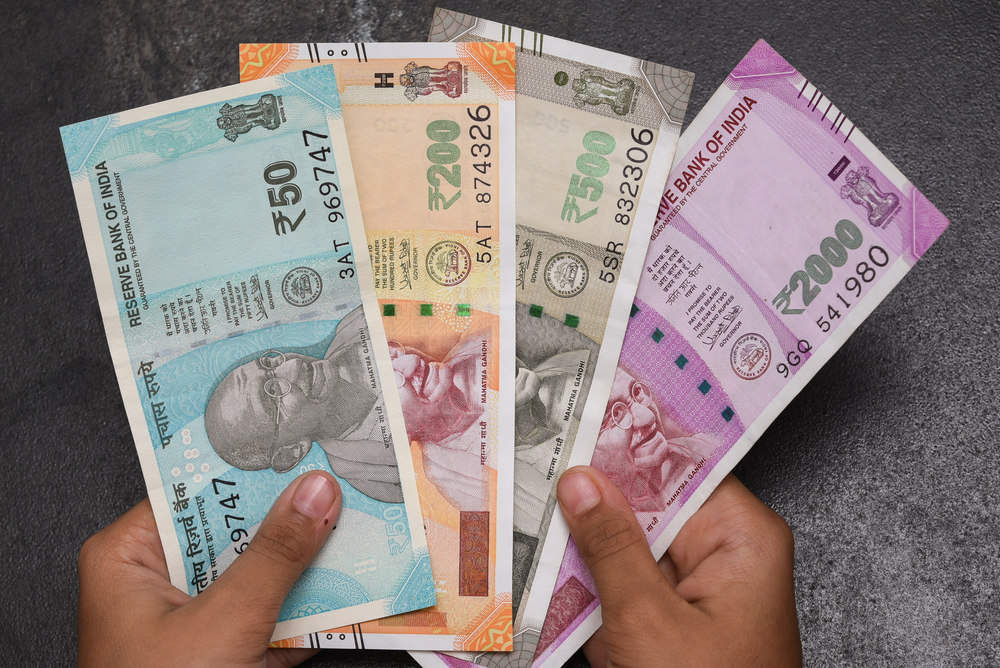
Money, the most essential need of any individual for surviving in this cruel world. In today’s world, you should be thankful that the air or oxygen is free. Except that, we believe nothing is a gift and everything costs something to someone. As rightly quoted, “Baap Bada Na Bhaiya, Sabse Bada Rupaya”, this phrase never fails to make us realise that why we must work hard in & out to utilize every second of the day so that you don’t die poor. It becomes significant to be better than you were yesterday. Knowledge and skills are the keys.
This need arises from the fact that the cost of everything is bound to go upwards in future. The reason behind this purely simple, as the resources are limited and demand is high. The world’s population is increasing at an astonishing rate with the resources going downscale.
In our country, printing and distribution of currency is the exclusive right and duty of the Reserve Bank of India (RBI). The Reserve Bank of India is responsible for the printing of currency (both coins and notes) of all legal denomination expect the one-rupee notes. All the one-rupee notes are produced under the management of the Ministry of Finance and duly signed by the finance secretary. All other notes are signed by the governor of the Reserve Bank of India.
The Ministry of Finance is solely accountable for producing and printing of one-rupee notes and issuing of coins of all denomination. It is justifiable to say that only the Reserve Bank of India has the authority to circulate both notes and coins in India. What this means is that the Ministry of Finance produces and prints one rupee notes and mints all coins and hand over them to the Reserve Bank for their circulation in the country.
Who could forget the Goosebumps Shri Narendra Modi gave the entire country by declaring demonetisation of old currency. To curb the challenges post demonetisation, Reserve Bank of India has managed to print the new notes of Rs.200, Rs.500 and Rs. 2000 in large numbers. To distribute the new notes across the country led a significant increase in the printing cost in the year 2016-17.
According to the annual report of the Reserve Bank of India, the bank has spent Rs. 7,695 Crore on producing and printing the new notes right between July 2016 and June 2017. This amount is way higher than the previous year’s expenditure of Rs. 3,420 Crores i.e. 133%. The increase in the expenditure led to downfall in the profit transferred to the central government from the Reserve Bank of India by 54%.
As per the information shared by the central government in the Lok Sabha on December 18, 2017. In an inscribed response from the government, Minister of State for Finance P. Radhakrishnan quoted that after the demonetisation a total of Rs. 1,695.7 Crores of new notes of 500 rupees have been printed till December 8, 2017. The government has also shared information about the production cost of notes Rs. 2000 and Rs. 200 and the total amount spent on it.
Now you might also be wondering as to how much money is spent on printing of these new notes or the cost of printing currency in India? So here is the cost for you:
The government of India spends Rs 4.18 on printing of each Rs 2,000 note. The cost of printing of each Rs 500 note is Rs 2.57 and for Rs 100 note it is Rs 1.51.
Whereas for each Rs 10 note the money spent by the government is Rs 1.01. Fascinatingly, the Rs 20 note is 1 paisa cheaper than the Rs 10 note. This could be due to various reason such as colour etc.
While researching the cost of printing the new notes, we also tried to look for the cost of printing the old monetised notes and the new Rs 500 and Rs 2,000 notes.
The Right to Information exposed that it cost Rs 3.09 to produce the old Rs 500 note, which translates to the new Rs 500 note is 52 paise less expensive than the old Rs 500 note. In the meantime, the Rs 1,000 note was printed at a price of Rs 3.54. Consequently, the printing of the new Rs 2,000 note expenses to 64 paise higher than the printing of the Rs 1,000 note.
We know you didn’t know about this cost, right? In continuation to this, we bring some more mindboggling facts about our Indian Currency:
- The cost of making a ten-rupee coin is Rs. 6.10.
- There are 17 different languages printed on an Indian currency note.
- No need to curse your bad luck if you have a torn note. If you have 51% or more part of the torn note, you can exchange in for a new one at the bank.
- Back in the year 1917, one rupee was equivalent to 13 dollars.
- Zero-rupee notes were issued by an NGO named 5th Pillar in order to fight corruption. The purpose was to handover this note to anyone who asks for a bribe.
- Post-independence in 1947, Pakistan originally used Indian currency. They simply impressed the Indian currency with the label “Government of Pakistan” for using it solely in Pakistan.
- The currency with Mahatma Gandhi’s series was introduced in 1996.
- The Rs 500 note was first introduced in 1987 and Rs 1000 was first introduced in 2000.
- As per the Coinage Act of 2011, the RBI can issue the coins up to the denomination of ?1000.
- The latest rupee symbol was designed by Udaya Kumar. Uday is an Associate Professor and Head of Department of Design, IIT Guwahati. The design of the rupee symbol was approved by Ambika Soni. Udaya Kumar was awarded Rs 250,000 for his efforts.
- List of some images that can be observed on the notes:
Rs 5 – Tractor in a field
Rs 10 – Elephant, Rhinoceros, and Tiger.
Rs 10 (new) – Konark Sun Temple.
Rs 20 – Port Blair lighthouse and Mount Harriet.
Rs 50 – Indian Parliament House.
Rs 50 (new) – Hampi with the chariot.
Rs 100 – Himalayas
Rs 100 (new) – Rani Ka Vav (Queen’s Stepwell)
Rs 200 – Sanchi Stupa
Rs 500 ( new) – Red Fort
Rs 2000 – Mangalyan

